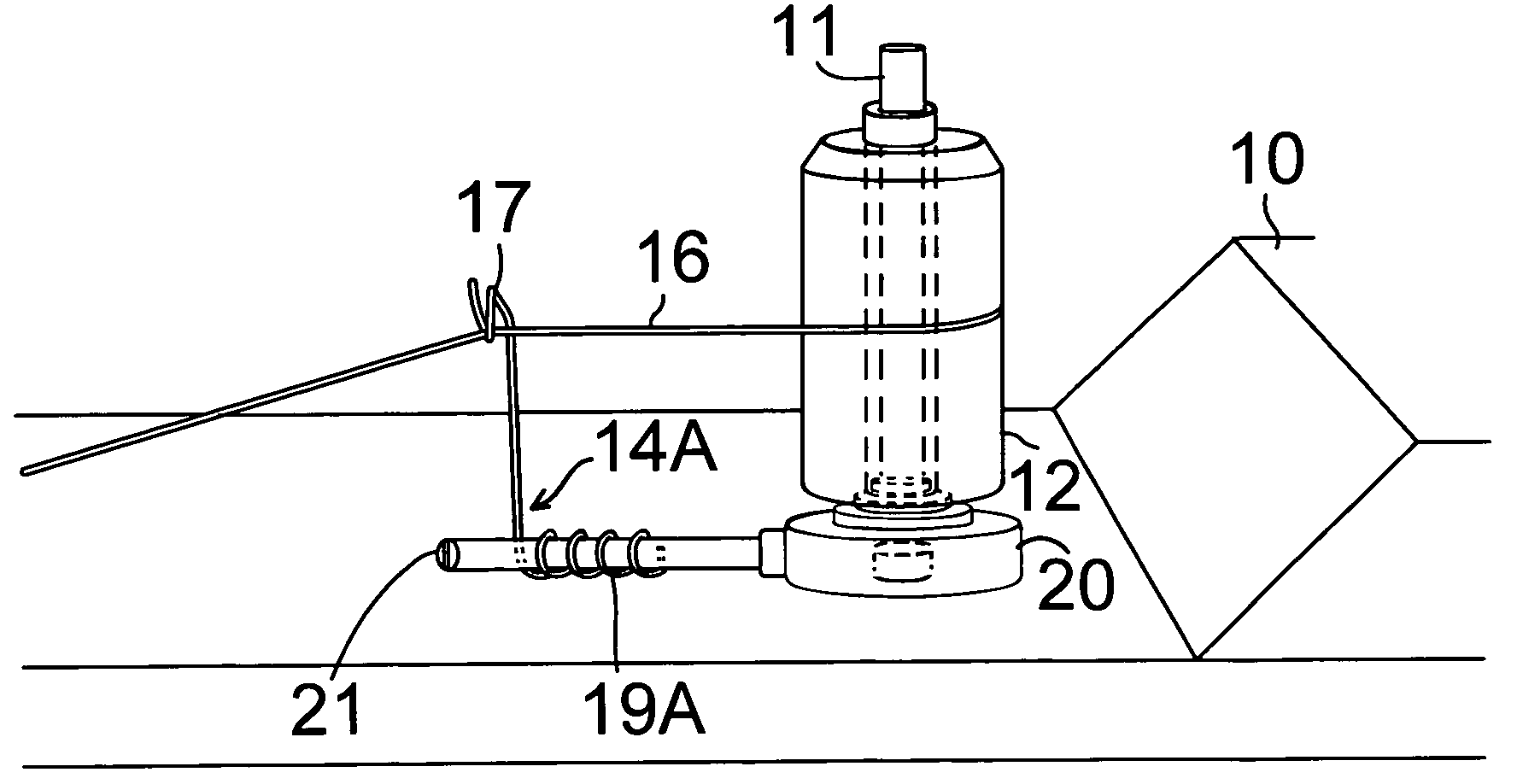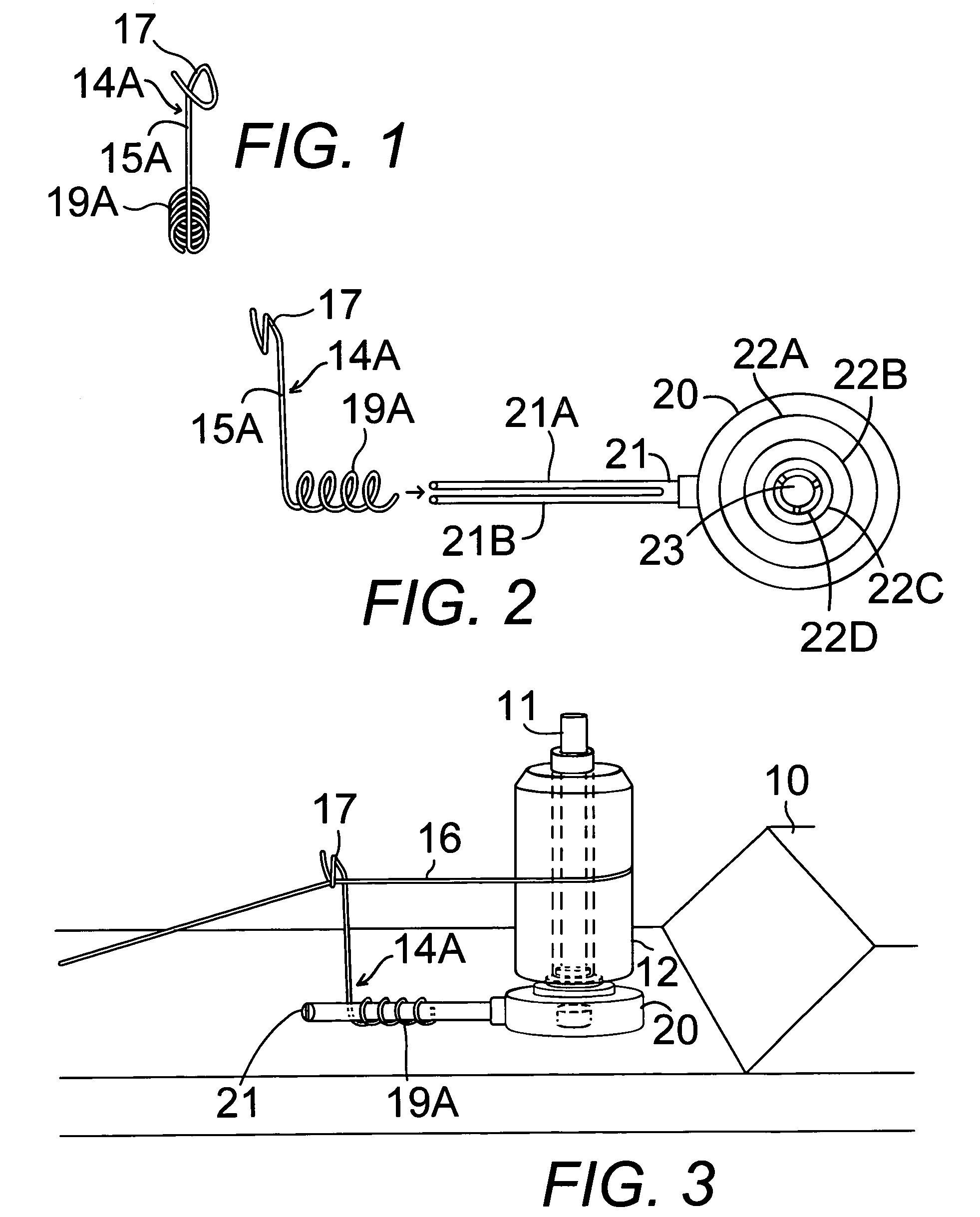Sewing machine embroidery thread guide
a technology of embroidery thread and guide, which is applied in the direction of embroidering machines, spool-pin assemblies, textiles and paper, etc., can solve the problems of tangling and breakage, operator back-space, and difficulty in preventing thread unraveling
- Summary
- Abstract
- Description
- Claims
- Application Information
AI Technical Summary
Benefits of technology
Problems solved by technology
Method used
Image
Examples
Embodiment Construction
[0045]In FIGS. 1–10, a thread guide attachable to an embroidery and sewing machine spool pin rod 11 comprises a thread guide arm 14A–14C attached by a base mount 20 for guiding embroidery thread 16 from an embroidery spool 12 on the spool pin rod 11 of an embroidery and sewing machine 10.
[0046]The thread guide arm 14A–14C comprises an upwardly projecting element, preferably a bent wire 15A–15C with an open loop 17, preferably an open spiral bend, at a distal end of the bent wire. The thread guide arm is adapted to generally extend along a forward-rearward axis of an embroidery and sewing machine 16 with the open loop spaced apart from and positioned opposite to a central portion of an embroidery thread spool 12 of an embroidery and sewing machine 10, as seen in FIGS. 3, 5, and 6. The open loop 17 is adapted to receive a line of embroidery thread 16 through the open loop 17 with the line of embroidery thread 16 extending from the embroidery thread spool 12 on one side of the thread g...
PUM
 Login to View More
Login to View More Abstract
Description
Claims
Application Information
 Login to View More
Login to View More - R&D
- Intellectual Property
- Life Sciences
- Materials
- Tech Scout
- Unparalleled Data Quality
- Higher Quality Content
- 60% Fewer Hallucinations
Browse by: Latest US Patents, China's latest patents, Technical Efficacy Thesaurus, Application Domain, Technology Topic, Popular Technical Reports.
© 2025 PatSnap. All rights reserved.Legal|Privacy policy|Modern Slavery Act Transparency Statement|Sitemap|About US| Contact US: help@patsnap.com



